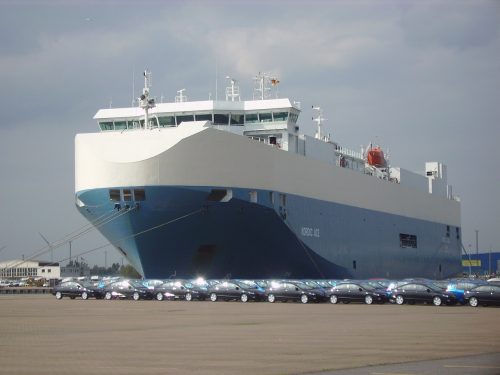Car carrier shipping is expected to continue its slow recovery, supported by improving utilisation and minimal vessel ordering.
However, costs are rising while the trade outlook is vulnerable to rising geopolitical risk, which is expected to lead to more distressed vessel sales as shipping lines focus on landside investments in search of profitability, according to global shipping consultancy Drewry.
Seaborne trade in finished vehicles, including high & heavy and used autos, continued to grow from 2016’s low, recording growth of 1% in 2018 to 22.8 million units, and this trend has continued into 2019. This is despite the first decline in global vehicle sales in a decade as U.S. and Europe transactions peaked and a decline in China, now the world’s largest vehicle market, accelerated after years of double-digit growth.
“North-south and intra-regional trades continue to gain market share compared to hitherto dominant East-West routes, offering opportunities for triangulation,” said Tom Ossieur, Head of Car Carriers at Drewry.
“However, matching supply and demand is becoming increasingly challenging for car carriers in the current climate of rising trade tensions and low forward traffic visibility.”
Continuing last year’s trend, owners and operators are holding off acquiring vessel capacity, as trade uncertainty and downward risks weigh on the market. Just four car carriers were ordered during the first half of 2019, mostly small ships for regional trades.
Drewry said that time charter rates are forecast to rise over the next five years as fleet utilisation improves. But profitability will lag on rising operating costs and higher bunker prices with the introduction of IMO mandated low sulphur fuel regulations in 2020.
Meanwhile, despite the slowdown in trade growth ports across North America and Europe reached peak utilisation in 2018 leading many terminal operators to invest in capacity expansion, rewarded by strong financial returns. Similarly, ports in developing regions remain in need of new investment and finished vehicle handling expertise to accommodate rising auto traffic, particularly as carrier deployment of larger vessels is compromising operational efficiency at these ports.
Nearly two-thirds of the 550 terminals handling vehicles around the world move less than 50,000 units a year. Most of these are small multi-purpose terminals that struggle to handle sizeable parcel sizes carried by large Post-Panamax vessels and are in need of expertise to leverage capacity and service offer expansion opportunities.
“Unlike car carrier shipping, the global vehicle port terminal sector is highly fragmented, with the need for investment likely to trigger more consolidation,” Ossieur added.
“Poor financial returns from carrier liner operations and an uncertain trade outlook will force a rise in distressed vessel sales and a diversion of investment to more profitable port assets.”

